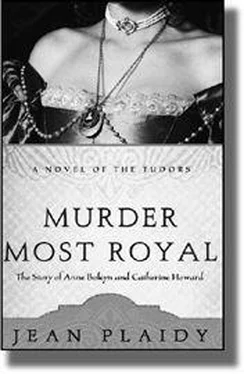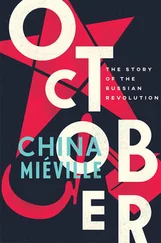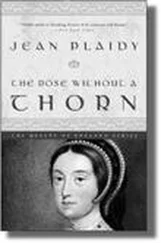Plaidy, Jean - Royal Sisters - The Story of the Daughters of James II
Здесь есть возможность читать онлайн «Plaidy, Jean - Royal Sisters - The Story of the Daughters of James II» весь текст электронной книги совершенно бесплатно (целиком полную версию без сокращений). В некоторых случаях можно слушать аудио, скачать через торрент в формате fb2 и присутствует краткое содержание. Жанр: Старинная литература, на русском языке. Описание произведения, (предисловие) а так же отзывы посетителей доступны на портале библиотеки ЛибКат.
- Название:Royal Sisters: The Story of the Daughters of James II
- Автор:
- Жанр:
- Год:неизвестен
- ISBN:нет данных
- Рейтинг книги:4 / 5. Голосов: 1
-
Избранное:Добавить в избранное
- Отзывы:
-
Ваша оценка:
- 80
- 1
- 2
- 3
- 4
- 5
Royal Sisters: The Story of the Daughters of James II: краткое содержание, описание и аннотация
Предлагаем к чтению аннотацию, описание, краткое содержание или предисловие (зависит от того, что написал сам автор книги «Royal Sisters: The Story of the Daughters of James II»). Если вы не нашли необходимую информацию о книге — напишите в комментариях, мы постараемся отыскать её.
Royal Sisters: The Story of the Daughters of James II — читать онлайн бесплатно полную книгу (весь текст) целиком
Ниже представлен текст книги, разбитый по страницам. Система сохранения места последней прочитанной страницы, позволяет с удобством читать онлайн бесплатно книгу «Royal Sisters: The Story of the Daughters of James II», без необходимости каждый раз заново искать на чём Вы остановились. Поставьте закладку, и сможете в любой момент перейти на страницу, на которой закончили чтение.
Интервал:
Закладка:
There were continual pinpricks, such as when the new coins were issued. The heads of William and Mary were to be engraved on these coins, and there had, in fact, been difficulty in getting them made because Philip Rotier, the artist who had worked for the crown, refused to do so for William and Mary, boldly stating that he did not consider them the true King and Queen. His son, Norbert, however, was less scrupulous and undertook the work.
When these were completed the head of William looked as though it belonged to a satyr. It was deliberate, and of the same pattern as the lampoons which were circulated daily. The people did not like Dutch William. They had not wanted papist James but they did not want William either. It was only Mary, he knew, who kept them on the throne. What he had always feared was, in a way, happening. It had been one of his nightmares that Mary would become Queen of England and he merely her consort. That had not happened; but again and again he was reminded that he was only accepted on her account.

The political situation was dangerous, and William was constantly at Whitehall. Mary who was suffering from a cold which she could not throw off, remained at Kensington to take advantage of the purer air. Occasionally William would come there; but when he did he would be working all the time and rarely stayed long before he was called back to business in Whitehall.
Mary was melancholy; she worried about William’s health for the spitting of blood had started again and his asthma was worse. She heard through the gossip of his pages that he drank a great deal—always Holland’s gin—when he was with his Dutch friends, and although he never showed signs of intoxication he became irritable. He was working too hard, planning new campaigns, and was never at rest.
One day when she was at her toilet the ruby fell out of the ring which he had put on her finger when he married her. Of all the splendid jewelry she possessed this ruby ring was the most precious to her. Often she would remember the occasion when he had placed it on her finger, the horror in her heart, the ready tears; and all because she was marrying William whom, she assured herself, she had come to love more than she had believed it was possible to love anyone.
“The ruby!” she cried as it dropped to the floor.
Her women were on their hands and knees searching for it, and one of them, finding it, held it up.
“Your Majesty will have it reset.”
She was trembling. “I do not like that,” she said.
“Your Majesty has had it for many years. Stones do drop out now and then.”
“I am afraid,” she said, “that it is an omen.”
“Your Majesty is tired,” soothed Lady Derby. “Will you allow me to take the ring and have the stone put in?”
Mary handed it to her, but she could not shake off her melancholy, and when the ring was returned to her she did not wear it. She wrote an account of how William had slipped it on her finger, how she had always treasured it beyond all other jewelry, and then how frightened she had been when the stone had fallen out.
She put it on her finger while she wrote. Then she thought: I shall never feel it is safe. I shall always be afraid of losing it now.
So she put it into a box with what she had written about it and locked the box.
That gave her a feeling of security; as though she had taken precaution against fate.

Mary had felt ill throughout the day; she had slept badly and in the morning was filled with such a sense of foreboding that she did not wait for her women to come to her. Instead she got up and examined her arms and shoulders. It was almost as though she had been expecting what she saw there. They were covered in a rash.
She went back to bed and lay there waiting.
There was one disease which all feared, for although some took it and survived, mostly it was fatal. If she were suffering from small pox she would have very little chance of recovery. She was only thirty-three, but she loved rich foods; her habit of drinking chocolate every night had made her put on a great deal of weight and she had heard that those whose blood was rich with a surfeit of food fared badly in the sickness.
When her women came to her she said: “Do not come too near me, but call Dr. Radcliffe.”
When Dr. Radcliffe came, he said she was suffering from the measles.
The news was quickly circulated that the Queen was sick.

At Berkeley House Sarah felt as though new life was being pumped into her. The Queen sick. Measles, they said. But was it? Doctors who wanted to cheer the patient and not spread alarm sometimes said “Measles” when they meant “Small pox.”
If it were small pox, she couldn’t survive. She was not strong enough. She was too fat; and moreover she had suffered recently from the ague. She hadn’t a chance.
The great moment might be at hand, for if she died, would the people keep William? And if they would not, it was Anne’s turn.
Sarah went to her mistress who was lying on her couch. She frowned at her. Anne herself was in a poor state; She had suffered in the last year so badly from gout and dropsy that she could scarcely walk and had to be carried everywhere. She was enormous, and the fact that she was once more pregnant made her look larger than ever and feel more indisposed.
“Mrs. Morley has heard the news?”
Anne looked surprised, and as obviously she hadn’t, Sarah lost no time in telling her.
“Radcliffe says measles, but the man’s a fool. From what I hear it’s the pox.”
“The pox!”
Sarah clicked her tongue impatiently. “You know what this can mean, Mrs. Morley?”
Anne looked startled. Then she said: “Of course. Oh, dear, we must act quickly.”
“There is nothing much we can do at the moment, Mrs. Morley, except be patient for a while.”
But Anne was not listening. “My boy must leave Campden House at once. If there is small pox in Kensington he may be in danger.”

If Dr. Radcliffe diagnosed measles, Dr. Millington could not agree with him.
The Queen was suffering from small pox, said Dr. Millington, and Mary believed him.
She assured them that she felt a little better and that night dismissed her women. “If I need you,” she said, “I shall call. If I do not call, I wish to be left in peace.”
When she was alone, she rose, and taking the boxes in which she kept her writings and correspondence she sat at her table. Many candles had been lighted at her command and piece by piece she destroyed what she had written in her journals, the letters she had received from William during his campaigns, those which she had received from her father and Frances Apsley; she wanted no one to pry into her life, for she had expressed herself too frankly in her journals about her relationships with others. She had always intended to destroy these things at the last moment; and she believed that moment had come.
All through the night she sat there, reading those letters which recalled so much of her life; they brought back memories of a passionate young girl—a girl who had dearly loved another woman before she had been thrust into a marriage for state reasons; of the reluctant marriage which she had done her best to make into the perfect union; of the love she might have had for two men, Monmouth and Shrewsbury, but had never been given, only dreamed of.
Читать дальшеИнтервал:
Закладка:
Похожие книги на «Royal Sisters: The Story of the Daughters of James II»
Представляем Вашему вниманию похожие книги на «Royal Sisters: The Story of the Daughters of James II» списком для выбора. Мы отобрали схожую по названию и смыслу литературу в надежде предоставить читателям больше вариантов отыскать новые, интересные, ещё непрочитанные произведения.
Обсуждение, отзывы о книге «Royal Sisters: The Story of the Daughters of James II» и просто собственные мнения читателей. Оставьте ваши комментарии, напишите, что Вы думаете о произведении, его смысле или главных героях. Укажите что конкретно понравилось, а что нет, и почему Вы так считаете.












